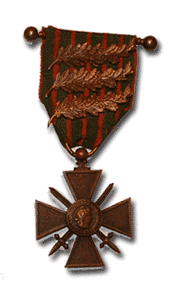United States Air Service
USAS HistorySummary 1917-1918 Lafayette Escadrille
N.124/Spa.124 1st Observation
1st, 12th, 50th, 88th 1st Pursuit Group
27th, 94th, 95th, 147th 1st Bombardment
96th, 11th, 20th 2nd Pursuit Group
13th, 22nd, 49th, 139th 3rd Pursuit Group
28th, 93rd, 103rd, 213th 4th Pursuit Group
17th, 148th, 25th, 141st 5th Pursuit Group
41st, 138th, 638th 3rd Air Park
255th. List of Aces
United States Naval Aviation
US Naval AviationUnited States Marine Corps Aviation
US Marine AviationAircraft
 Nieuport 28
Spad VII
Spad XIII
Fokker Dr.1
Albatros D.Va
Fokker D.VII
Nieuport 28
Spad VII
Spad XIII
Fokker Dr.1
Albatros D.Va
Fokker D.VII
Website: Atlanta SEO
E-mail us

United States Naval Aviation - World War I
When the United States joined the war, in its total inventory, it had only 109 military aircraft. 55 of those were the obsolete army aircraft. But 54 were obsolete navy aircraft. The navy also had a dirigible, two balloons, a solitary naval air station at Pensacola, 48 officers and 239 enlisted men.
With the powerful German surface fleet more or less bottled up in its home ports, the US Navy's primary objective once the US joined the war was to mitigate the threat of U-boat attacks. In this role, the Navy escorted convoys across the Atlantic using tethered kite balloons, ship based small seaplanes as well as shore based large seaplanes and dirigibles. The mission of these four different types of naval aviation was simple: to shepherd convoys in and out of port, across the Atlantic and to patrol coastal waters to destroy submarines before they could get near the convoys.
After the declaration of war, it was the US Navy which sent the first American military unit to Europe. Its 130 man First Aeronautic Detachment made up of men from almost every state in the Union arrived in France on June 5, 1917, well before General Pershing. They crossed the Atlantic aboard the USS Jupiter, survived an attack by a German U-boat which fired two shots at them, both of which missed. When they arrived in the port town of Pauillac, France, from where Lafayette had set sail heading in the other direction in 1777, they had no specific mission. But events unfolded rapidly.
They waited at St. Maxient until room could be made for them at the Ecole d'Aviation Militaire training base of Tours. At the end of two weeks, these same men started training under French instructors on 90 horsepower French Caudron G-3 aircraft. Tragically first fatality came just six days later in a training accident there on the 28th. Nonetheless, two thirds of them qualified in spite of receiving less than five hours of dual instruction.
During the course of the war, the navy went from one naval air station at Pensacola to "27 in France, England, Ireland, and Italy, one in the Azores, two in Canada, one in the Canal Zone, and 12 in the United States in full operation. Others were under construction. 22,000 flights totaling more than 3,000,000 nautical miles of war patrols had been flown. The submarine had been challenged from the air for the first time, and at least 30 of them had felt the concussion of exploding bombs dropped from aircraft. Large numbers of aircraft had been built, raising the total on hand from a mere 54 at the beginning to over 2,000 at the end." Furthermore, naval aviation now counted 15 airships and 215 balloons of different types. In at least one or two cases, American naval aviators had damaged submarines which were later sunk by destroyers.
The naval air patrols over the Atlantic continued another month after Armistice Day just in case there were any U-boats out there which had not yet gotten the message that the war was over. The last patrol was flown to escort President Wilson's ship as it made its way to France for the Treaty of Versailles conference.
File under:
Squadron A, First Marine Aviation Force
Squadron B, First Marine Aviation Force
Squadron C, First Marine Aviation Force
Squadron D, First Marine Aviation Force
Squadron 7, First Marine Aviation Force
Squadron 8, First Marine Aviation Force
Squadron 9, First Marine Aviation Force
Squadron 10, First Marine Aviation Force
NAS Pensacola
United States Naval Aviation - World War I
United States Marine Aviation - World War I
Northern Bombing Group
The American Northern Bombing Group in World War I had eight squadrons - four marine and four navy. These were the first marine aviation squadrons and the first navy aviation squadrons. Tags:
7th Squadron
8th Squadron
9th Squadron
10th Squadron
Marine Aviation
1917
1918
La Fresne Aerodrome
Oye Aerodrome
St. Inglevert Aerodrome
Campagne Aerodrome
1st Squadron
2nd Squadron
3rd Squadron
4th Squadron
US Naval Aviation
United States Marine Corps Aviation
Events/Airshows
 Events/Airshows
Events/Airshows
Pilots/Aviators
 Raoul Lufbery
Raoul LufberyAce of Aces Eddie Rickenbacker
26 victories Quentin Roosevelt
Son of President KIA Frank Luke
18 victories in 17 days Eugene Bullard
1st African Am. Pilot David Ingalls
1st US Navy Ace List of USAS Pilots
Find a Relative American WWI Pilots
Mini bios
USAS Research
 USAS Videos
Reading List
USAS Videos
Reading ListWWI US Aviation Related Links
WWI US Aviation Credits War Wings
by Phillip W. Stewart WWI Maps
Units & Airfields Payne Field
USAS Aerodromes now... USAS Archives
Questions? Need Help? American Expeditionary Forces
WWI Doughboys in France